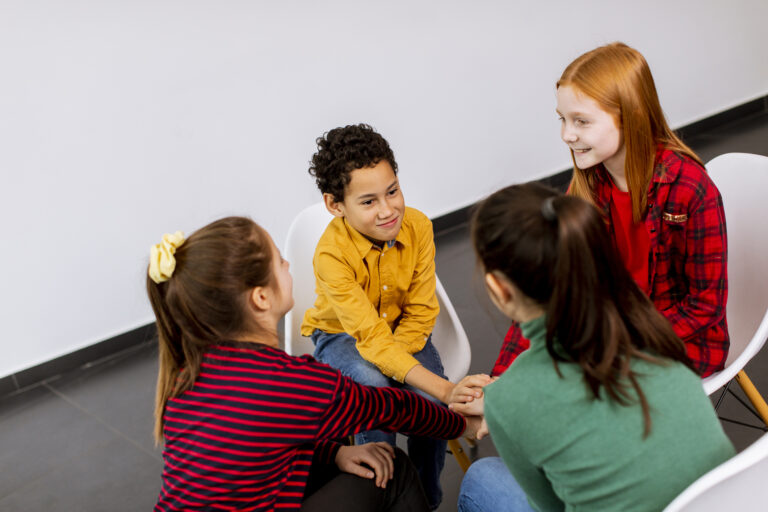This resource is provided by ACSA Partner4Purpose AALRR.
Yet another school shooting has galvanized and emboldened schoolchildren nationwide to stage protests and walkouts over gun-control laws. Faced with potential mass student demonstrations, school administrators’ attention naturally turns to minimizing disruptions to the educational program. Certain superintendents, including those in Texas and Virginia, have threatened disciplinary reprisals against students who miss any part of school to protest gun laws. Regardless of intent or motive, such threats will be interpreted as curtailing of protests — which implicates students’ free speech rights.
Student free speech rights
Courts have long held that students do not “shed their constitutional rights to freedom of speech or expression at the schoolhouse gate.” (Tinker v. Des Moines School District (1969) 393 U.S. 503, 511.) The “schoolroom prepares children for citizenship, and [in turn] the proper exercise of the First Amendment is a hallmark of citizenship in our country.” (Chandler v. McMinnville School District (9th Cir. 1992) 978 F.2d 524, 527.).
While students’ freedom of speech is not absolute, courts have upheld school district action limiting student speech in only a few narrow circumstances, such as speech that promotes illegal drug use or is obscene. (Morse v. Frederick (2007) 551 U.S. 393, 397; Bethel School District No. 403 v. Fraser (1986) 478 U.S. 675, 683, 106.) The Ninth Circuit Court of Appeals, the appellate body with jurisdiction over California among other states, has distinguished student speech in three broad categories, with each category maintaining its own level of protection:
- Schools can regulate vulgar, lewd, obscene, and plainly offensive speech.
- School-sponsored speech, meaning speech that is disseminated by way of a school-sponsored publication, theatrical production, or other official forum as a vehicle of student expression, may be regulated to the extent that the limitations are reasonably related to legitimate pedagogical concerns.
- Speech that does not fit within the confines of the other two categories may be limited 3.only if the speech will foreseeably and substantially interfere with the work of the school or impinge upon the rights of other students. (Pinard v. Clatskanie School District 6J (9th Cir. 2006) 467 F.3d 755, 765; see also Education Code § 48907.)
Student protests over gun control likely fall into the third category. Districts may have difficulty showing that a one-day or partial-day protest “substantially interferes with the work of the school.” In an analogous case, a federal district court recently granted a temporary restraining order preventing a school district from enforcing a policy that would prohibit students from kneeling during the national anthem at high school football games. (V.A. v. San Pasqual Valley Unified School District (S.D.Cal. Dec. 12, 2017) No. 17-CV-02471-BAS-AGS, 2017 WL 6345405.) The California Legislature has been sympathetic to student rights in these matters and enacted Education Code section 48960, which prohibits a school district from enforcing “a rule subjecting a high school pupil to disciplinary sanctions solely on the basis of conduct that is speech … is protected … from governmental restriction by the First Amendment to the United States Constitution.”
To the extent a district is inclined to discipline students who participate in protests, the Legislature requires alternatives to suspensions or expulsions for truancy, tardiness, or other absences from school activities. (Education Code § 48900(v).) An appropriate response is not to discipline student demonstrators because of their participation in a walkout, but to impose measured sanctions for unexcused absences from school. The level of discipline should not, for example, be harsher than the punishment given students who simply miss school due to “Senior Ditch Day” or any other unexcused absence.
Implications of employee speech
Administrators should also consider that “First Amendment rights, applied in light of the special characteristics of the school environment, are available to teachers.” (Tinker, supra, 393 U.S. at p. 506.) The courts recognize that “public employees do not surrender all their First Amendment rights by reason of their employment. Rather, the First Amendment protects a public employee’s right, in certain circumstances, to speak as a citizen addressing matters of public concern.” (Garcetti v. Ceballos (2006) 547 U.S. 410, 417.)
If teachers wish to participate as citizens in the student-led protests, their participation may be restricted to the extent necessary to keep the schools operating efficiently and effectively. (Id. at p. 411.) As with students, teachers should not be subjected to discipline for participating in a protest; however, they may face consequences for abandoning their duties during work hours. And while students are under their supervision, teachers are expected to monitor student safety, act professionally, and set positive examples. (See Education Code § 233.5.) Thus, if teachers join their students in a demonstration during the instructional day, the teachers are accountable for the students’ conduct and safety.
Teachers’ participation could also implicate concerted labor activity. A teacher or union might contend that participation in a protest is for the protected purpose of advocating for a safe working environment. To avoid a potential grievance or unfair labor practice charge, school districts should meet with their association leadership in advance of possible protests to discuss the expectations for employees to remain engaged in their duties during work time.
Classified employees participating on their own time have the same speech rights as teachers. And like teachers, classified employees are expected to continue performing their assigned duties during work hours. Employees who are responsible for student supervision or safety should be briefed in advance about possible demonstrations or walkouts. A coordinated effort can help all participants remain safe.
Creative approaches to student walkouts
Schools may consider a variety of alternatives to disciplinary measures, to show support for student safety while minimizing the disruption of a walkout:
Notices to parents: Gaining parent support is an effective way to deter walkouts and minimize disorderly conduct. Informed parents do not want their children disciplined, unsupervised, or injured. Parents who are forewarned may encourage their children not to leave school and to find other ways to express their views. Schools may use an automated phone messaging system to notify parents that, contrary to rumors, school will be open on a day designated for protest, and that students are expected to attend classes.
Classroom discussions: Social studies or history teachers can offer a viewpoint-neutral historical explanation of gun-rights issues and allow students to articulate their differing views.
Staff meetings: Schools can review attendance and discipline policies with teachers to ensure a uniform response to students who walk out or inquire about the consequences of doing so. Schools should also review lockdown procedures to be prepared in the event demonstrations become disruptive.
School site forums for discussion: Schools can designate specific places and times for student-protestors to peacefully express themselves. For example, during the lunch period students could be provided a forum in the quad area to convey their messages. Supervised after-school access to auditoriums is another option, with reasonable time restrictions and directions not to use profanity or incite violence. Schools can also utilize assemblies as a “Teach-In” for historical perspectives and a question and answer session. Neighborhood schools may invite parents, students, and community members to an evening town hall meeting.
Designated protest area: Schools can designate a safe and adequate space on campus for students to hold their demonstration. This option keeps students on campus, mitigates the risk of off-campus injury, and maintains supervision of students. This option requires advance planning, such as deciding whether to allow outsiders onto the campus to participate, with the involvement of staff and student government representatives.
A half-day: As a last resort, schools can call a half-day to allow students and employees to engage in peaceful protest. Before doing so, a district should negotiate the decision with its labor unions, as this action implicates employee wages, hours and other terms and conditions of employment. (Claremont Police Officers Ass’n v. City of Claremont (2006) 39 Cal.4th 623, 631.) The district must also ensure time lost from instruction does not implicate average daily attendance or cause the school to fall below minimum instructional minutes. (See Education Code §§ 46207(b), 46208.) To avoid losing instructional time, school administrators can request that the walkout occur during the final minutes of the school day, so if students leave the site, the school’s liability is no greater than on any other day after school lets out.
As noted by Justice Brandeis more than 90 years ago, when the government is concerned about speech such as a student protest, “the remedy to be applied is more speech, not enforced silence.” (Whitney v. California (1927) 274 U.S. 357, 377.) School districts can work cooperatively and creatively with students and staff to prepare their campuses, safeguard student safety, and even turn the anticipated protests into a teachable moment.




























